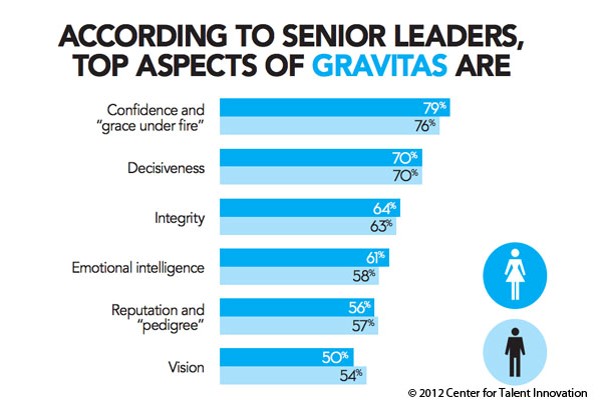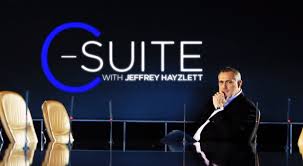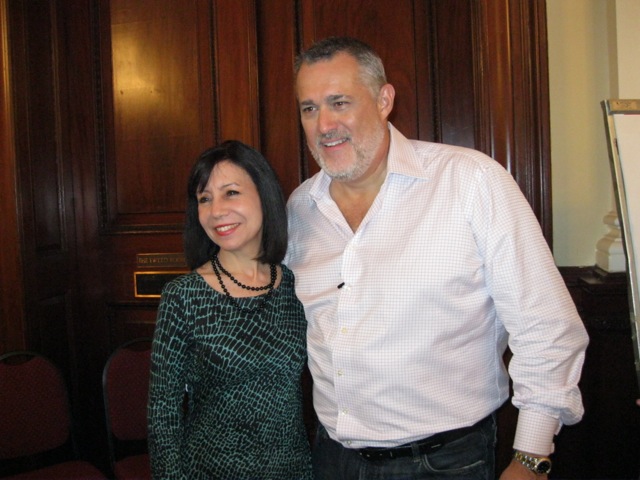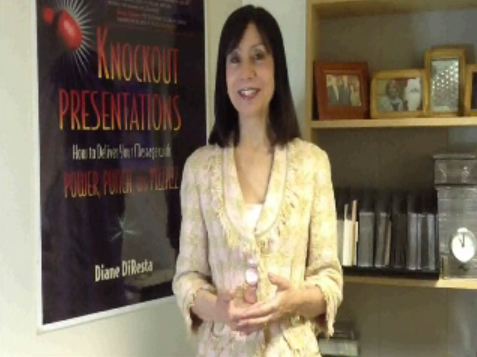When T.S. Elliott said, “The fog comes on little cat feet”, he wasn’t referring to a Zoom filter. Mistakes happen. Most can be prevented with preparation, rehearsal and a back-up plan.
Press Release: Diane DiResta to Speak at Financial Executives International
FOR IMMEDIATE RELEASE
New York, NY. October 11, 2018
Diane DiResta, CSP, author of Knockout Presentations, and Founder and CEO of DiResta Communications, a New York City consultancy, will be the featured speaker at FEINYC, Financial Executives International in New York City.
As a professional speaker and executive speech coach Ms.DiResta will speak about Influential Leadership: How to Communicate with Impact and Influence.
Today’s CFOs and Financial Executives must be able to command attention, influence analysts and stakeholders, and deliver a message with lasting impact.
In this interactive program attendees will learn communication skills of top leaders and how they:
Create presence on the platform to command the room
Get to the point to deliver a clear message
Speak with confidence and exude authority
As in all her presentations, the audience will leave with practical takeaways that can be applied immediately to enhance leadership communication.
The evening will end with networking and a booksigning of the newly released 3rd edition of Knockout Presentations.
About Diane DiResta
Diane DiResta, CSP, is Founder and CEO of DiResta Communications, Inc., a New York City consultancy serving business leaders who deliver high stakes presentations— whether one-to-one, in front of a crowd or from an electronic platform. DiResta is the author of Knockout Presentations: How to Deliver Your Message with Power, Punch, and Pizzazz, an Amazon.com category best-seller and widely-used text in college business communication courses and author of the ebook, Give Fear the Finger. She has unique ability to get to the core of the message and translate complexity into simplicity.
Diane is Past President of the NYC chapter of National Speakers Association and former media trainer for the NBA and WNBA. Diane is a Certified Speaking Professional and licensed Speech Pathologist.
About FEI NYC
The Chapter is the premier organization for financial executives in New York City. The Chapter promotes the fellowship and interaction among its members and has active programs to enhance their professional knowledge and qualifications.
Since 1933, the FEI NYC Chapter has been successfully connecting Financial Professionals in the New York City metro area providing a truly unique forum to meet at live events (most of which carry CPE), attend general peer-to-peer networking events or webinars, gain access to the rest of the 10,000 FEI members, benefit from advocacy efforts, research, and career center.
FEI NYC strives to provide its Membership with unique opportunities to facilitate or cultivate the development and furthering of the Finance profession at many levels.
From robust programming and professional networking activities to our mentoring relationship with the students attending local colleges, nearly every FEI NYC activity will provide an opportunity for you, the Financial Professional, to either get what you need or share what you know. FEI NYC functions as a 501c(6).
8 Tips When Speaking in the Line of Fire
Do You Have an Executive Voice?
Blah Blah Blah... Executives Talking Badly
How often have you attended a meeting only to hear someone drone on? You wonder if they are ever going to stop and make their point. Do they even have a point?
The Essence of Executive Presence
 Executive Presence is difficult to describe, but you know when you have it.
And so it goes in the workplace. Clients call me to work on a leader’s “executive presence.” They’ll say the leader needs “polishing” or “gravitas,” but they can’t be specific.
Executive Presence is difficult to describe, but you know when you have it.
And so it goes in the workplace. Clients call me to work on a leader’s “executive presence.” They’ll say the leader needs “polishing” or “gravitas,” but they can’t be specific.
What is clear is that the coaching candidate is stuck at a level. Without the ability to convey executive presence, they lose credibility and don’t advance further.
The myth is that executive presence is about dressing well. Attire is a visual shorthand. At first glance, your audience or stakeholders will determine if you’re a leader by the way you’re dressed. That’s part of it, but it’s only one piece of the puzzle. Have you ever known someone who looks like a million dollars until they opened their mouth?
Take the case of Deborah (not her real name). When I first met her, she looked like Ms. Dress for Success; however, when she presented at meetings she lost credibility with senior management. Deborah hedged, sounded hesitant and wouldn’t put a stake in the ground. Her boss couldn’t promote her to Vice-President and asked me to coach her.
What does this have to do with speaking? The answer is Confidence.
The presenter’s job is to inspire the audience's confidence that he/she is an expert (or at least qualified to speak on the subject). A speaker must have presence on the platform. Deborah discovered that leaders align visual, vocal, and verbal communication to influence. If one of these areas goes out of sync, the message is altered. Deborah learned to convey executive presence and was promoted to Vice-President.
So what exactly is executive presence? It's the missing link between merit and success. The chart above breaks down the aspects of “gravitas” so you’ll no longer say “I’ll know it when I see it.” You’ll be able to recognize and convey executive presence by knowing the components. Whether your platform is a stage or a meeting room, the boardroom or the back room, you’ll be able to assess yourself and project confidence.
Presenting Your Message to the C-Suite
 How often have you seen a talented expert with good presentation skills, derail when they spoke to the C-Suite? My clients have complained about this issue. Their direct reports lose credibility with senior management and don't sell their ideas. They then become dependent on the manager to give the high level presentations.
It's no different with consultants and vendors. They get to the C-Suite and lose an opportunity because they don't know how to adjust their presentation.
How often have you seen a talented expert with good presentation skills, derail when they spoke to the C-Suite? My clients have complained about this issue. Their direct reports lose credibility with senior management and don't sell their ideas. They then become dependent on the manager to give the high level presentations.
It's no different with consultants and vendors. They get to the C-Suite and lose an opportunity because they don't know how to adjust their presentation.
So, I went directly to the C-Suite and asked them what presenters should know when selling to the C-Suite....
The Laughter of Leadership
We've heard about managing by walking around. We've heard about leading by storytelling. But can you laugh your way to leadership? It turns out that laughter is an important leadership and presentation skill. But when it comes to humor in the workplace men are more skilled than women.
Judith Baxter, professor of applied linguistics at Aston University in the U.K, studied how men and women use language. She observed men and women who were leading high level meetings. Baxter found women to be less at ease using humor. 80% failed when attempting to be humorous and sometimes derailed as a result. In contrast, Professor Baxter observed that 90% of men's humor got a laugh. This reminds me of the numerous times women have told me that their ideas aren't taken seriously. Yet, when a man presents the same idea minutes later, it's enthusiastically embraced.
Are men naturally funnier than women? Baxter didn't answer that question, postulating instead, that culture plays a role. We expect men to be funny but don't have the same expectation of women. Teasing and one-upmanship resulted in laughter from men, but it was risky for women to use the same tactics. When I speak to women leaders, it's been my experience that women don't take enough credit for their accomplishments and speak in more self deprecating terms. Motivational speaker Tony Robbins contrasted the male one-upmanship communication style with the female pattern, which he dubbed 'one-downmanship'.
In addition to cultural expectations, Baxter cited minority status as another reason for this difference in effective use of humor. She observed an 80/20 male-to-female ratio in the meetings she attended. Being in the minority made some women defensive and less relaxed. An interesting turn of events occurred in meetings with middle managers. When the meetings were more gender balanced or contained more women, the women got more laughs.
So could lack of female confidence once again be at the core of this gender difference in humor? Is this one of the reasons women get stuck in middle management? Is humor the missing key to leadership advancement? Speaking may be the new competitive advantage but humor may be the leadership edge.
What's been your experience? Should women leaders study stand-up comedy?
Speaking to Senior Management: Don't Make These Mistakes
 Do you freeze up when you have to speak to senior management? Do you wonder how you can gain their attention and establish your credibility? Well, here's advice direct from the C-Suite.
Jeff Hayzlett, author of Running the Gauntlet and producer of C-Suite, the best selling Bloomberg television show, was the keynote speaker at the New York chapter of National Speakers Association. As the former Chief Marketing Officer of Kodak, he knows what's important to C- level executives.
Do you freeze up when you have to speak to senior management? Do you wonder how you can gain their attention and establish your credibility? Well, here's advice direct from the C-Suite.
Jeff Hayzlett, author of Running the Gauntlet and producer of C-Suite, the best selling Bloomberg television show, was the keynote speaker at the New York chapter of National Speakers Association. As the former Chief Marketing Officer of Kodak, he knows what's important to C- level executives.
From my experience as an executive speech coach, I know first hand that clients freeze up when they present to senior management. Whether you're speaking to the C-suite or speaking to the board of directors, it's important to adjust the presentation to the needs and style of these kinds of audiences.
Hear what Jeff has to say about speaking to senior management in this brief video interview:
Executive Presence: Fall Makeovers and Tips for Women
 I co-hosted my first event with 85 Broads, and it was a smashing success. The topic, Get Your Executive Presence On, received rave reviews. The event was sponsored by CHANEL and Saks Fifth Avenue, and held at CHANEL's education center on East 57th St in New York City.
I co-hosted my first event with 85 Broads, and it was a smashing success. The topic, Get Your Executive Presence On, received rave reviews. The event was sponsored by CHANEL and Saks Fifth Avenue, and held at CHANEL's education center on East 57th St in New York City.
The evening began with networking and fall makeovers. Each woman received a makeup application and instruction. When everybody looked beautiful, we gathered to hear my presentation about 8 keys to Executive Presence for women. The audience learned ways that women can be heard, look like leaders, and own the room.
CHANEL provided a special ambiance, with lighting, wine and delicious hors d'oeuvres. They provided a skincare station and a fragrance and chocolate pairing station. The networking continued as CHANEL was cleaning up - people didn't want to leave.
Here's what some attendees had to say:
I didn't think I would learn anything new, but I did. Diane is incredible. The things she shared with people are life-changing." -Judy
This, for me, is one of the best events I've attended." -Sophie
Diane gave examples and insights that had the whole audience captivated." -Alison
I've been to so many seminars and trainings on leadership and thought I'd heard everything about how to be an effective public speaker. But Diane's presentation gave me tips I never heard before." - Carrie
How One Presentation Turned Into $7,500
 How much is your presentation worth? If you're not speaking with power and confidence, you're losing money. There is an ROI to your presentation.
A few months ago, I met with a coaching prospect and presented myself and my services. He recently confided that he had interviewed a number of coaches before selecting me. He said that I was the most professional, I had a game plan, and I told him the truth about his coaching needs. Some coaches were dressed too casually. Some said they would do whatever he wanted when he asked them about their approach. He didn't feel confident about their services. I closed the sale with one meeting - with one presentation.
How much is your presentation worth? If you're not speaking with power and confidence, you're losing money. There is an ROI to your presentation.
A few months ago, I met with a coaching prospect and presented myself and my services. He recently confided that he had interviewed a number of coaches before selecting me. He said that I was the most professional, I had a game plan, and I told him the truth about his coaching needs. Some coaches were dressed too casually. Some said they would do whatever he wanted when he asked them about their approach. He didn't feel confident about their services. I closed the sale with one meeting - with one presentation.
People think of public speaking as having intangible benefits - you make people feel good, you get a message across, maybe someone feels inspired. But if you're not selling a product or service, you may think there is no tangible value.
In beauty pageants, the interview is weighted at 40% of the score. The contestant's ability to present herself well yields thousands of dollars in scholarship money. That's tangible.
When you're interviewing for a job, your resume gets you in the door. Your presentation is what gets you the job. The ROI on that presentation is equal to the salary you're offered.
Your ability to sell yourself and your value gives you an extra edge when you get a raise and get promoted. Figure out how much of an increase you'll get, and that is the ROI of your presentation.
Speaking is not a soft skill. It's a powerful leadership skill and can no longer be avoided. You don't have to be a professional speaker to gain financially from your presentation.
How much is your speaking worth?
How to Present Complexity With Clarity
 I recently came across this cartoon and started laughing out loud. It really resonated with me. I relate to that guy who's defaulting to something he knows and something he can understand. It's that old adage: Keep It Simple, Stupid.
I recently came across this cartoon and started laughing out loud. It really resonated with me. I relate to that guy who's defaulting to something he knows and something he can understand. It's that old adage: Keep It Simple, Stupid.
Yet, so many presentations are like coming face- to-face with big data. And they make you want to jump out the window. This is especially true with financial, technology, and scientific presentations. I know how it feels when I buy a new piece of technology. I can't bear to look at the user manual. I'll either watch a how-to video or call upon my technical assistant because she speaks 'Geek' and English.
Apparently, there's too much geek being spoken in the workplace.
Wouldn't it be great if you could transfer your data into the minds of your listeners as easily as pushing a button? Recently, the actor Alan Alda was on the morning news promoting a new career. He's coaching scientists how to present to Congress. When scientists present to congressional committees, their audience doesn't understand what they're recommending. Their gobbledygook is as confusing to Congress as legislation is to the rest of us. The impact is they don't get the funding they need.
When I coach executives and leaders who are presenting at high-stakes venues or before the executive committee, the complaint is that they aren't succinct. Here are 5 tips for communicating simply and clearly.
- Avoid using acronyms, buzz words, and jargon. Never assume your audience knows the meaning of company or industry jargon. Use the complete word or description initially. Later in the speech, you can use the acronym - after you've defined it.
- Use analogies and metaphors from every day life. When speaking about something complex or technical, an analogy or metaphor will boil it down to its simplest essence. Recently a client was presenting about clinical trials. The slide was busy and there were a lot of complex details. I recommended that she refer to the clinical trial timeline as a dashboard. The dashboard metaphor simplified the timeline so the audience could understand the details without getting lost in the weeds.
- Less is more: use shorter words and fewer of them. There is a misconception about using a large vocabulary when presenting. While it can make you sound smart, it can also confuse your audience. Simplicity equals clarity. Most marketing copy is aimed at an 8th grade reading level. While this makes the most erudite public speakers bristle, it ensures that the message is heard. The question is this: Do you want to be clever or clear?
- Tell stories. A story has a natural sequence. When you have a lot of data and it's wrapped in a story, it has the same effect as using an analogy or metaphor. People can follow it. They get involved.
- Start with the big picture. The biggest mistake technical presenters make, is they get lost in the detail. Start with the helicopter view. Listeners need a roadmap. So give them context. Give them the big idea, and then drill down for details. If you ordered a turkey sandwich and it came with the meat on top of the roll, you would send it back. Well that's the experience your listeners have when you start with detail. Save the meat for the middle of your presentation. Use a speech template and plug in your data to keep your presentation organized and simple.
Use these tips to present big data with clarity, and your presentation will become a data transfer system that your listeners understand.
Craft and Deliver Your Presentation With Clarity, Confidence and Impact.
What's Executive Presence Gotta Do With It?
What is executive presence? And why does it matter? You know it when you see it. But it's difficult to describe. At some point a career will be stalled because the person doesn't look, speak, or act like a leader. That's when a company will call me to work on the leader's executive presence. Executive presence is the tipping point for getting promoted. How do you get it? Watch this video to learn more.
Words Will Die. 2013 Communication Trends
 Words are dying.
Words are dying.
According to 2013 communication trends research by Davis & Company, words will die. What does that mean for speakers and their presentations? And what will replace words?
Obviously, we won't stop speaking. But visuals will rule. And I don't mean PowerPoint. Pinterest is the fastest growing social media platform.It's usage has increased 1000%.
Engagement on facebook increases 100% when posts are visual. Photos, videos, and infographics have more impact and are quickly making written text outdated.
When coaching transitioning executives on their elevator pitch, I often go to the white board to draw visuals. Instead of scripting words, I use graphic facilitation to create visual cues (graphics, symbols) to build a storyline and help them remember their core messages.
The transformation is amazing! Suddenly, their presentation flows as they stop struggling to remember the written words. Their presentations become conversational as the visuals serve as concept cues. The job applicant or presenter sounds natural instead of scripted. Graphic facilitation is also effective in leading groups toward a common goal and is becoming more popular for strategy sessions. The facilitator organizes information spatially and visually.
Presenters who use graphic facilitation will increase audience engagement, big-picture thinking, and group memory.
Change the way you communicate or get left behind. Improve your presentation, remember more, and stop reading your notes. Leave a message in the comment box to learn how to use graphic communication to be a better presenter and to engage your audience.
Mitt Romney Got Booed - Have You?
 Mitt Romney was invited to speak to the NAACP knowing that it's members are overwhelmingly Democratic. He acknowledged and thanked his hosts and expressed his honor at being invited.
He made an attempt at humor by saying “I hope the Obama campaign doesn’t think you’re playing favorites.“ There was a mild tittering from the crowd.
Mitt Romney was invited to speak to the NAACP knowing that it's members are overwhelmingly Democratic. He acknowledged and thanked his hosts and expressed his honor at being invited.
He made an attempt at humor by saying “I hope the Obama campaign doesn’t think you’re playing favorites.“ There was a mild tittering from the crowd.
Governor Romney anticipated the question everybody was thinking. How did a Republican become governor of Massachusetts? He explained that he made the case to every single voter as he was doing now and later added, “I know candidates can expect a fair hearing from a venerable organization like this."
He clearly articulated his goals to provide jobs, improve education, and to help the middle class. His approach was to cut unnecessary spending. And then it happened. He said he would repeal Obama care which was greeted with booing from the crowd. It happens to many speakers.
In the late 1990's I gave a presentation in one of the Southern states. I was talking about behavioral styles and cited Bill Clinton as a typical "Influencing" or sales personality. All of a sudden I heard booing from the class. The South is generally Republican territory and Clinton was not popular. I smiled and made a joke about it and went on.
In the case of Romney, he stayed cool, smiled, and waited for the booing to die down. He didn’t get defensive and was allowed to continue. Romney spoke to the facts and repeated his intention to “create jobs for the American people.”
When he did score points with the crowd it was met with quiet applause. He extolled his record as governor by citing the improvement in reading and math scores and his raising the standards for high school graduation. He was able to successfully veto the bill that would block charter schools in Massachusetts by joining forces with the Black Caucus.
In an effort to build a bond, he told the story of his father, George Romney, who was involved in the civil rights movement of the 1960's. Unfortunately, it wasn't his own experience and didn't hit the mark.
Overall, Romney gave a professional speech. He clearly communicated his message points. You knew what he stood for. He stood on his record of accomplishments in Massachusetts.
Romney tried to influence with facts. As a result, he came from his head and not his heart. The missing ingredient was passion. Governor Romney needed to tell personal stories. It was a good speech, but not a moving speech. He received a polite standing ovation. The audience didn’t dislike him. They just weren’t moved by him.
It’s difficult enough for any speaker to present before an audience that isn't openly receptive. In an organization, a CEO who is announcing layoffs will not be greeted with enthusiasm. But an outstanding speaker can position a message and speak with such passion and conviction that they can influence an audience. That didn’t happen here. Could it have? Probably not. Romney needs to express more passion and personal connection if he is to win over his audience.
But does it matter that he was booed? Not really. What he accomplished was to get his message out. He didn't need to talk over the crowd and he wasn't forced off stage. Whenever a speaker delivers a message that is unpopular, the risk is rejection. It goes with the territory. The question to ask is this: Did the message get heard?
Have you ever been booed? How did you handle it?
Command More Clout: 5 Tips for Effective Communication
June is effective communication month. To increase your influence and executive presence, your message must grab and keep attention. I make sure that all my coaching clients know the secrets of speaking with impact. Here are 5 quick tips to be a knockout communicator.
What Are Your Presentation Disciplines?
 My coaching client was practicing his presentation. As he talked about the company process for managing a stock portfolio, he explained their stock picking discipline. Regardless of the portfolio manager’s expertise, it’s required to drop a stock when it dips below a certain level. In other words, they may carry big winners, small winners or small losers, but they don’t tolerate stocks that are big losers. This number or percentage is how they factor out emotions and manage risk.
After explaining the stock picking discipline, he looked up and asked me, “What are my presentation disciplines?
My coaching client was practicing his presentation. As he talked about the company process for managing a stock portfolio, he explained their stock picking discipline. Regardless of the portfolio manager’s expertise, it’s required to drop a stock when it dips below a certain level. In other words, they may carry big winners, small winners or small losers, but they don’t tolerate stocks that are big losers. This number or percentage is how they factor out emotions and manage risk.
After explaining the stock picking discipline, he looked up and asked me, “What are my presentation disciplines?
Do Women Need to Speak More Powerfully Than Men?
 In honor of Women's History Month, I thought I'd explore this issue of women speaking powerfully. It's been established that men and women communicate differently. The question is, do women need to speak more powerfully than men to be heard? Whether it's a speech, pitching an idea, or a one-on-one meeting, it appears that women need to work harder to have their ideas heard.
According to New York Women in Communications, women make up 3% of CEOs and occupy around 16% of board seats at the nation's Fortune 500 companies, and 15.2% of the directors at the largest companies are women.
In honor of Women's History Month, I thought I'd explore this issue of women speaking powerfully. It's been established that men and women communicate differently. The question is, do women need to speak more powerfully than men to be heard? Whether it's a speech, pitching an idea, or a one-on-one meeting, it appears that women need to work harder to have their ideas heard.
According to New York Women in Communications, women make up 3% of CEOs and occupy around 16% of board seats at the nation's Fortune 500 companies, and 15.2% of the directors at the largest companies are women.
A female professor at NYU received a request for a testimonial from a former student. The letter was over the top. So much so, she had to tone it down so it would sound realistic. It was no surprise to her that this communication came from a male. She realized that males tend to exaggerate their abilities, while women downplay their accomplishments and speak with less conviction.
I can corroborate this from my own experience coaching women leaders. Women have a more difficult time taking a strong position, speaking with authority, and promoting their own ideas. While coaching one executive woman, it was apparent that her area was the most profitable in the business, but her influence was a well-kept secret. We immediately got to work increasing her visibility: getting her name in trade publications, networking internally and externally, and booking speaking engagements.
Public speaking levels the playing field for women.
Here are some ways women can speak more powerfully:
- Lower their pitch.
- Put a stake in the ground.
- Use specific, definitive language.
- Negotiate with confidence.
- Work with a coach.
So I ask you, in your experience, do women need to speak more powerfully than men? Can they best learn to speak powerfully from a male or a female role model?






